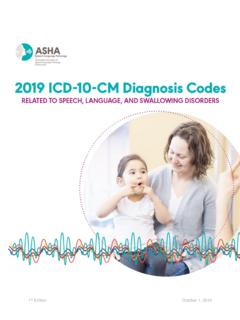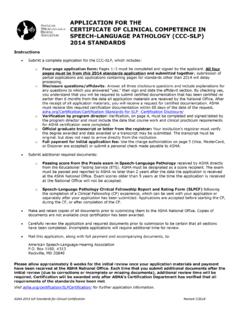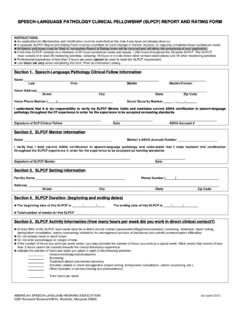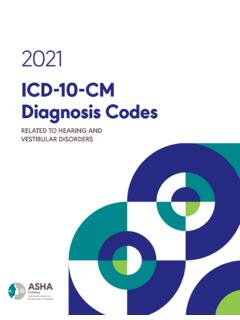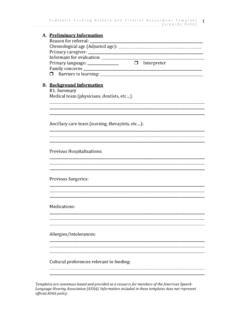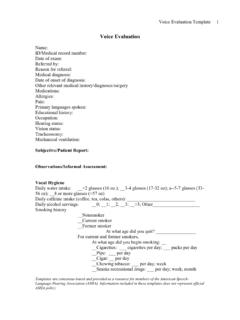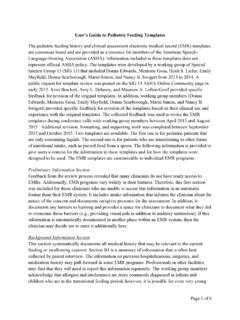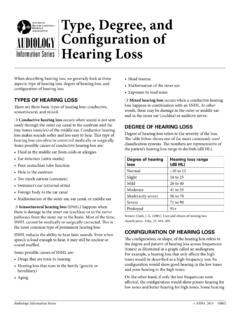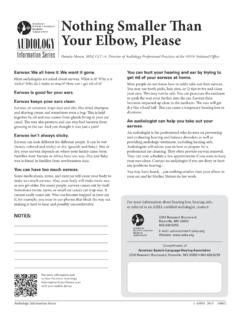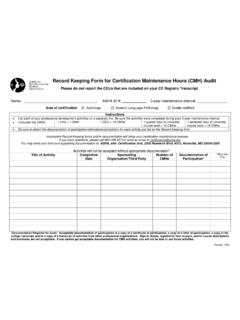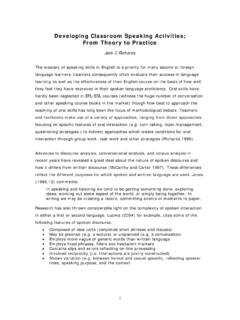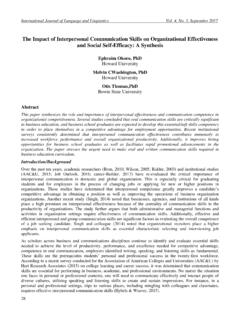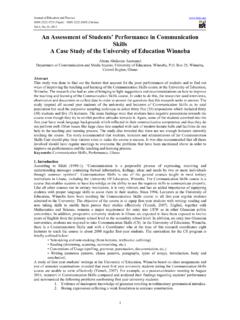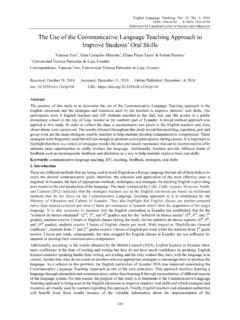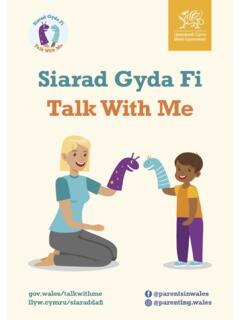Transcription of SPEECH AND LANGUAGE SERVICES Montgomery County …
1 SPEECH and LANGUAGE SERVICES Montgomery County Public Schools Rockville, Maryland 1 10/25/06 SPEECH AND LANGUAGE SERVICES Montgomery County Public Schools USING THE CURRICULUM TO FORMULATE IEP GOALS FOR communication THROUGH A DEVELOPMENTAL CONTINUUM Introduction and Rationale SLPs should write IEP goals that support the MCPS Curriculum. As stated in the English/ LANGUAGE Arts Curriculum Framework: oral LANGUAGE forms the foundation of reading/ LANGUAGE arts.
2 Listening and speaking proficiently prepares the individual to communicate articulately in society. As stated in the Maryland Voluntary State Curriculum English/ LANGUAGE Arts Content Standards: Listening is an active, purposeful part of the communication process that goes well beyond hearing. Receiving, attending to, assigning meaning for, responding to, and remembering aural messages are important aspects of listening. speaking is a powerful oral communication tool used for personal, academic, professional, and social purposes. This current document is an effort to illustrate examples of IEP goals that address foundational oral communication skills.
3 This document represents the belief that focus on oral communication skills will enable students to become engaged with the MCPS Curriculum. Ideally, this approach will lessen the impact of oral communication weaknesses as the student meets the challenges of the curriculum standards and indicators. Important Notes Note 1: Use of the goals assumes the student in question has been assessed and deemed eligible for SPEECH - LANGUAGE SERVICES . Note 2: Sample IEP goals are developed to support most content standards for any student who is eligible for SPEECH - LANGUAGE service because of oral communication issues.
4 SPEECH and LANGUAGE SERVICES Montgomery County Public Schools Rockville, Maryland 2 10/25/06 Note 3: Sample IEP goals can be used with and adapted for students Pre-K through secondary. Note 4: Sample IEP goals can be adapted for students who are developing alternative forms of communication . Note 5: It is expected that goals will be modified to individualize for each student. In most cases, use of all of these goals as exactly stated is not expected.
5 Note 6: Items in sample goals that are BOLDED require that you choose and/or insert criteria appropriate for the developmental level of the student for whom you are writing the objective. Note 7: For each sample goal, evaluation method B provides a way to measure the student s performance of the targeted skill in a functional way or with curriculum-based materials/tasks. Note 8: Extraneous words should be deleted from the goal (words that do not apply). Reference Information The developmental information for reference below is taken from LANGUAGE Sample Analysis II The Wisconsin Guide, Wisconsin Department of Public Instruction, 2005.
6 It is based on data collected from 50 and 100 utterance samples of conversation. Benchmarks of sentence length and intelligibility are criterion referenced. The mean lengths of utterance quoted below represent the average performance for each age group. A typically developing 3-year-old child is expected to have an average utterance/sentence length of words. Intelligibility can range between 83 and 100%. A typically developing 5-year-old child is expected to have an average sentence length of words. Intelligibility can range between 94-100%. A typically developing 7-year-old is expected to have an average sentence length of words.
7 Intelligibility can range between 93-100%. A typically developing 9-year-old is expected to have an average sentence length of words. Intelligibility can range between 96-100%. SPEECH and LANGUAGE SERVICES Montgomery County Public Schools Rockville, Maryland 3 10/25/06 A typically developing 11-year-old is expected to have an average sentence length of words. Intelligibility can range between 96-100%. A typically developing 13-year-old is expected to have an average sentence length of words.
8 Intelligibility can range between 96-100%. Sample IEP Goals for oral communication Example Goal #1 (Receptive and Expressive: Vocabulary and Categorization) The student will group familiar items belonging to the same category and say a carrier phrase to label the category, ( These are all toys. ). Evaluation Method: A. (X)% of appropriate responses maintained over a 30 day period as documented by SLP in therapy log. * B. Demonstration of skill with (X) sets of familiar objects. Example Goal #2 (Receptive and Expressive: Explain Vocabulary and Categorization) The student will explain groupings of people, objects, places, events, and actions from story contexts to demonstrate likenesses and differences among items.
9 The student s explanations will include (X-word) sentences which are meaningful to the context. Evaluation Method: A. (X)% appropriate responses maintained over a 30 day period as documented by SLP in therapy log. * B. Demonstration of skill with at least one story studied in the classroom. Example Goal #3 (Expressive: oral Word-Finding) The student will use (X) strategies to facilitate recall of words from his/her personal repertoire during interactions with peers and adults ( , describing word in question, accessing phonological cues, using a picture, using a synonym). Student will use strategy/strategies with no more than one cue or reminder.
10 Evaluation Method: A. LANGUAGE samples obtained over a 30 day period will reflect use of above strategy/strategies (X) times. * B. Demonstration of skill with one story, personal experience or event presented in class. SPEECH and LANGUAGE SERVICES Montgomery County Public Schools Rockville, Maryland 4 10/25/06 Example Goal #4 (Expressive: Communicative Intents/Interactions) The student will participate in interactions for (X) exchanges.
